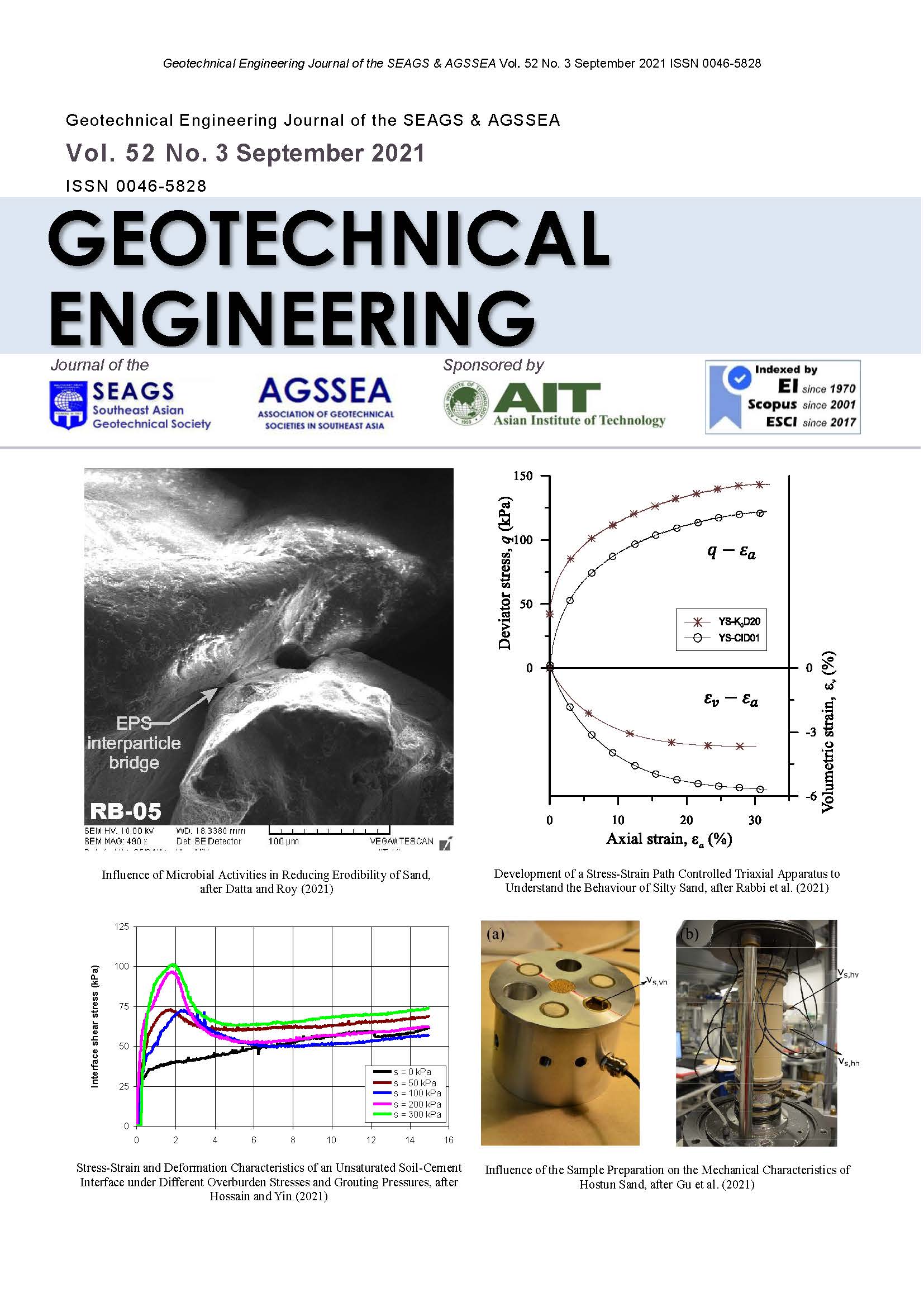Development of a Stress-Strain Path Controlled Triaxial Apparatus to Understand the Behaviour of Silty Sand
Main Article Content
Abstract
Triaxial tests are widely used to determine the shear strength, material properties and instability behaviour of soil. The conventional isotropically consolidated drained and undrained triaxial compression tests under constant confining stresses, fail to simulate many field stress conditions such as K0-consolidation for zero radial strain or the reduction of lateral confinement at constant shear stress and associated instability behaviour of slopes. Such strain or stress path controlled tests need special arrangements and control systems. In this paper, a newly developed triaxial apparatus, capable of stress-strain path controlled test, is described. The main feature of this apparatus is the precise measurement and control system, which permits individual control of the cell pressure, pore water pressure, vertical stress and axial strain. The apparatus was used to study the stress-strain behaviour of a South Australian silty sand under different stress-path testing such as isotropic and K0-consolidated undrained and drained shear, constant shear drained (CSD) and constant mean stress (CMS) tests. Critical state conditions were achieved with uniform soil deformation at large axial strains, except in the case of the constant shear drained (CSD) tests where a gradual reduction of lateral confinement accelerated sample failure.
Article Details

This work is licensed under a Creative Commons Attribution-NonCommercial-NoDerivatives 4.0 International License.
Copyright © 2019 Association of Geotechnical Societies in Southeast Asia (AGSSEA) - Southeast Asian Geotechnical Society (SEAGS).


